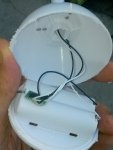Joel Grant
New Member
Hi Guys,
I am new to this so please try to be simple when explaining.
I have a 08m2+ and have been trying for days to calibrate 2 touch sensors. I am using the flow chart at this point. I just can not seem to get it to be consistent by any means. reading the forums it sounds as if touch sensors can be programed to self calibrate. Is this possible with the flow chart? And is there any basic code samples to try?
Joel
I am new to this so please try to be simple when explaining.
I have a 08m2+ and have been trying for days to calibrate 2 touch sensors. I am using the flow chart at this point. I just can not seem to get it to be consistent by any means. reading the forums it sounds as if touch sensors can be programed to self calibrate. Is this possible with the flow chart? And is there any basic code samples to try?
Joel

